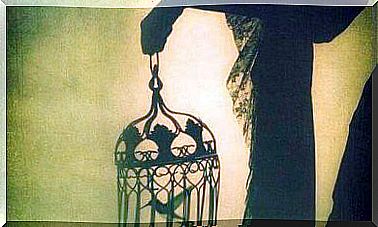The Invisible Gorilla: A Classic Experiment That Tests Perception

The experiment with the invisible gorilla has become a psychological classic. It was first implemented in 1999, but is still used as a typical example of the limitations of our perception. Furthermore, it illustrates how we humans do not like to accept the fact that we are often blind to the world around us.
The creators of the experiment with the invisible gorilla , Christopher Chabris and Daniel Simons, had no idea that the experiment would arouse so much curiosity and become so popular. It has been repeated countless times, in different countries and with people of all ages and with different levels of education, and the results have been very similar.
If you want to perform the experiment yourself, you just need to watch the video below and follow the instructions before reading on. The rest of the article will be more understandable if you do!
- Just count the number of passes that the team with white shirts makes to each other .
- You must pay attention and count both air passes and bounce passes.
- Take the test. Then read on.
The experiment with the invisible gorilla
In the paragraph above , we gave you the same instructions that Chabris and Simons gave to a group of volunteer students before undergoing the experiment.
After the participants had seen the video, they were asked the following questions (you can answer them yourself if you saw the video):
- Did you notice anything strange while counting the number of passes?
- Did you notice anything beyond the players?
- Or did you notice anyone other than the players?
- Did you notice a gorilla?
The last question was the one that most surprised the volunteers in the experiment with the invisible gorilla. At least 58% of them. Each time the experiment has been repeated, the proportion of surprised participants has been more or less the same. Yes, there was a gorilla in the video, but more than half did not notice it. Did you see it?
The reactions to what happened
The first time the experiment with the invisible gorilla was performed, as well as all subsequent times, most of the participants who did not notice the gorilla’s presence were amazed at how clear everything was! It could not understand how they could have missed something so obvious.
When you ask them to watch the video again, they can all easily see the gorilla. Some people think they were shown two different videos, but of course they are not. The experiment won the Ig Nobel Prize. This is a prize awarded for such scientific achievements as “first make one laugh and then make one think”.
Why are so many people blind to such an obvious image in the video? That’s the big question you ask yourself after seeing it. It is also striking that so many people refuse to accept that their eyes and perception deceive them. They think they have the ability to see everything exactly as it is and yet they have missed something so obvious.

The traps of perception
Researchers Steve Most and Robert Astur performed a similar experiment a few years later. In this case, a driving simulator was used. Volunteers were asked to stop when they reached an intersection if they saw a blue arrow. If, on the other hand, they saw a yellow area, they did not have to stop.
But when the volunteers performed this activity, two motorcycles swung in front of them in the simulator. When the motorcycle was blue, the virtual drivers noticed it and braked. When it was yellow, almost 60% of the riders rode the motorcycle. Somehow the results of the experiment with the invisible gorilla had been repeated.
What happens in these cases is that people completely focus their attention on the point that they are interested in. In the first case it was the white team’s passes, in the second case it was the blue arrow. In their minds, all attention was focused on a particular color. Because the gorilla was black and the motorcycles were yellow, the volunteers missed these elements.
This happens because some people can only focus on one variable at a time, while others have a broader and more flexible perception pattern. This explains why one e.g. should never talk on the phone while driving.








